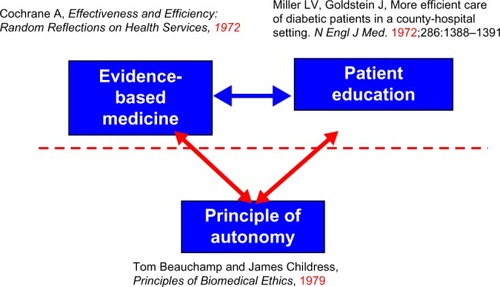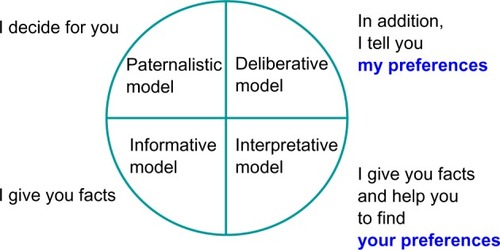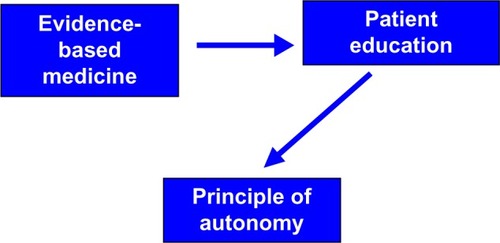Figures & data
Figure 1 The three inventions of evidence based medicine, patient education, and autonomy.

Figure 2 Four models of the physician–patient relationship, definitions from Emanuel and Emanuel.Citation35

Figure 3 A model of care in chronic diseases: patient education as an ethical pathway. A definition of patient education: patient education is the empowering process that in chronic care not only provides information to the patients but also leads them to an interpretation of their own preferences and a deliberation between their, and the HCP’s, preferences.


